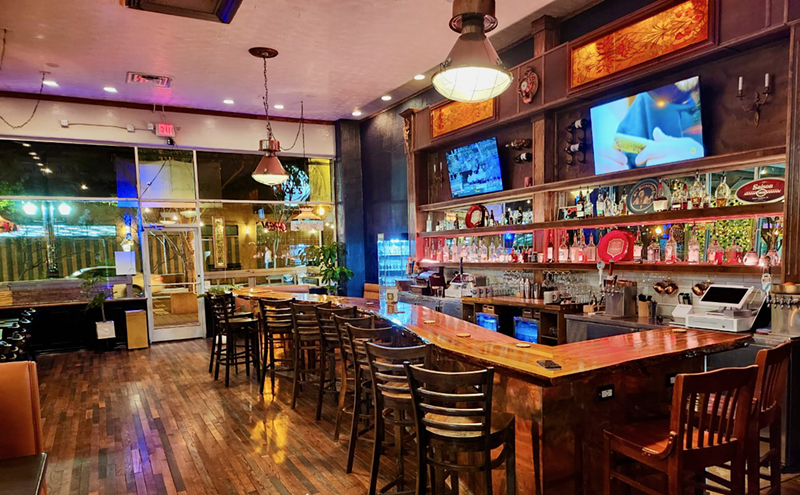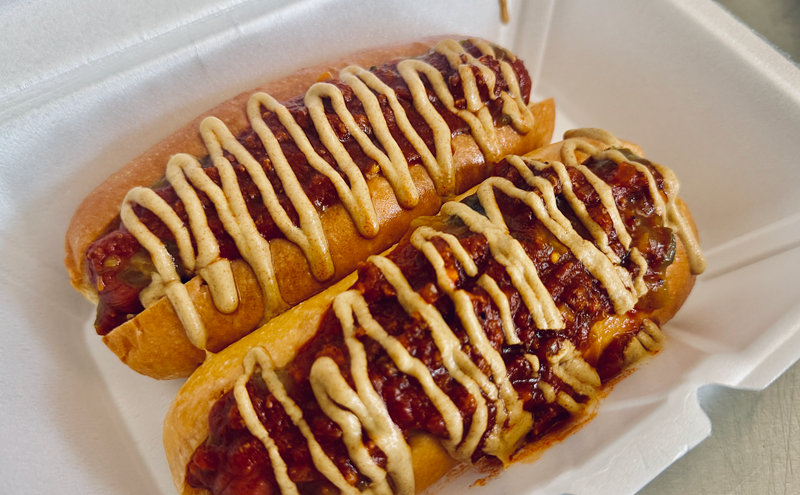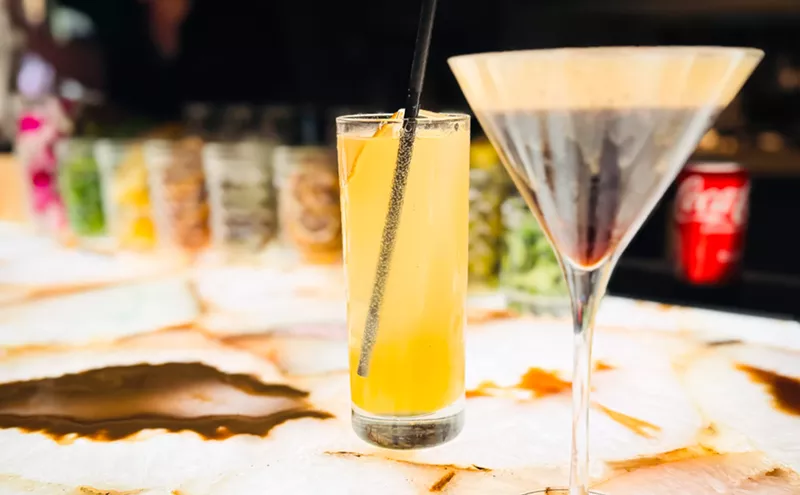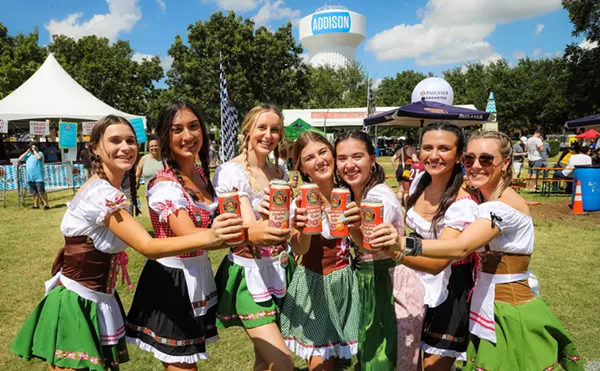J. Kenji López-Alt’s blog, The Food Lab, has been a cult favorite for years among the small community of food lovers who are also science geeks. His long-awaited first cookbook, also The Food Lab, is a 958-page, 6.2-pound monument to culinary nerdery. And it could forever change the way you cook.
López-Alt made his name by vigorously applying his MIT-cultivated science chops to food, and he continues to do so here. The book is filled with informal experiments and MythBusters-style segments in which he tackles myths like the idea that searing meat “seals in the juices.” (Myth busted.) He blindfolds some steak lovers who prefer their meat bloody-rare; with the blindfolds on, they actually prefer the texture of a steak cooked medium. (If your Texan sensibilities are offended, at least López-Alt says “the finest burger I’ve tasted in recent memory” is from Off-Site Kitchen.)
Some of the tricks in this book, developed through experimentation, can legitimately change your kitchen life. For example, López-Alt suggests you drop the pasta in the pot at the very beginning, before the water is boiling or the stove is even turned on. It works so well, the only noticeable difference is the time you save. He adds depth to vegetarian chili by pouring in tequila. And he is a big fan of steaming your vegetables in the microwave, even corn in the husk, using a few layers of wet paper towels.
We tested 14 recipes from The Food Lab, and all of them tasted great. More important, none were hard to follow and only one needed tweaking. For the first time, we made fish fillets with ultra-crisp, bistro-style skin. Almost-no-stir risotto did take more stirring than hoped for, but its texture was fabulous, and the flavor combo of chorizo and Brussels sprouts was inspired. A handy table of salad dressing ratios and flavor combinations is spot-on. Only apricot-glazed pork tenderloin, while delicious, needed a bit of revision. (At some point while browning the pork, you will want to reduce the heat.) We cooked a steak dinner using The Food Lab, too. First we scrutinized its two tables of steak cuts, which rate each cut’s tenderness and flavor, tell you what part of the cow it comes from, describe the taste and suggest the best cooking techniques. The tables confirmed what we already know, which is that rib-eye is delicious, so we bought a prime-grade, beautifully marbled rib-eye. Next we boned up on suggested precooking measures (salt your meat at least 40 minutes before cooking, but don’t bother bringing it to room temperature) and read the three-page experiment on how long to let meat rest after cooking.
And the Food Lab steak technique works: a steak that is evenly bright red from edge to edge, with pockets of fat that melt in your mouth. The outside is almost scarily dark in color, but there is no hint of burn, just crisp Maillard reaction goodness. Top it with a pat of foolproof blue cheese compound butter, the recipe for which is a few pages later, and you might swear off steakhouses for good. We paired that steak with ultra-crispy roasted potatoes, the kind that are still buttery-soft inside.
There are a few suggestions in the book we haven’t been able to try yet, but we will. You can use a mini-fridge to dry-age your own prime rib, with a step-by-step explanation and multi-page Q&A on the technique. And, after experimenting on 50 pounds of onions, López-Alt has a way to make French onion soup without hours of stirring.
If reading The Food Lab sounds like boring geeky homework, it’s not. The book is fun as hell. You’ll find Internet memes, sly put-downs (“This is enough meat to feed four Americans or a half dozen Europeans”), swear words, slightly too many dad jokes and at least one kinky double-entendre. López-Alt, a talented photographer, includes copious pictures of his dog staring with bug-eyed longing at his food. The book is an enjoyable read, whether you’re cooking or not.
There are a few drawbacks and trade-offs. This book’s 958 pages are almost entirely devoted to traditional American food, plus a couple of dishes that have entered the mainstream from Italy and Mexico. Kenji López-Alt is a multi-ethnic guy (half-German, half-Japanese with a Colombian wife), but the closest you’re getting to that here is fajitas. (Sequel: Food Lab International?) Also missing: dessert, because the author admits he’s just not qualified to do a full chapter, even though he once found his ideal chocolate chip cookie recipe by baking 1,536 cookies.
A much bigger issue is organization. The Food Lab is mostly a series of essays explaining concepts, experiments and ideas, augmented by the completed recipes. So, for instance, you’ll read about cooking juicy chicken breasts and then arrive at the recipe. That’s great, but why are the contents of each chapter listed by recipe instead of concept?
Concepts and recipes often seem to be listed in random order. For example, the searing chapter goes from steak to fish and then back to steak again. The two tables listing different beef cuts, with flavor ratings and cooking suggestions, are 46 pages apart, which is a pain in the rump steak. Similarly, there’s an essay called “All About Asparagus,” and then another essay about asparagus 30 pages later because he forgot something. Flatbread dough mysteriously appears in the ground meat chapter. And since “Thanksgiving” is filed with turkey in “Science of Roasts,” it’s also in the roasting chapter that you’ll find cranberry sauce. (Please do not roast your cranberry sauce.)
In this respect, The Food Lab is a bit like a treasure chest. You open it and it’s full of gold, but in messy piles. Like at a yard sale, you can discover cool stuff you didn’t know you wanted. We accidentally stumbled on a pasta puttanesca recipe, cooked it and decided that it is utter perfection, especially with olives and a fancy imported can of tuna from Jimmy’s.
Should you buy this book? Depends. If you are stubborn about your favorite recipes, The Food Lab is not for you. If you’re poor, the book isn’t ideal either, since López-Alt makes all-too-persuasive recommendations for expensive kitchen equipment like $90 instant-read thermometers. (This writer bought a $30 version, the ThermoPop. It played a major role in those perfectly cooked rib-eyes and ultra-juicy pork tenderloins.)
But if you’re willing to learn, you will love The Food Lab. For the home cook who’s serious about his craft and willing to buy a gadget or two, The Food Lab is basically a college-level course in cooking techniques. If you are a moderately knowledgeable home cook, this cookbook teaches many concepts and ideas you need to be a very good one. The reading is easy, the professor is fun and the final exam is bacon jalapeño mac ‘n’ cheese. Gooey, glorious, spicy bacon jalapeño mac ‘n’ cheese.

Audio By Carbonatix
[
{
"name": "GPT - Billboard - Slot Inline - Content - Labeled - No Desktop",
"component": "21721571",
"insertPoint": "2",
"requiredCountToDisplay": "2"
},{
"name": "STN Player - Float - Mobile Only ",
"component": "21861991",
"insertPoint": "2",
"requiredCountToDisplay": "2"
},{
"name": "Editor Picks",
"component": "17105533",
"insertPoint": "4",
"requiredCountToDisplay": "1"
},{
"name": "Inline Links",
"component": "18349797",
"insertPoint": "8th",
"startingPoint": 8,
"requiredCountToDisplay": "7",
"maxInsertions": 25
},{
"name": "GPT - 2x Rectangles Desktop, Tower on Mobile - Labeled",
"component": "22608066",
"insertPoint": "8th",
"startingPoint": 8,
"requiredCountToDisplay": "7",
"maxInsertions": 25
},{
"name": "Inline Links",
"component": "18349797",
"insertPoint": "8th",
"startingPoint": 12,
"requiredCountToDisplay": "11",
"maxInsertions": 25
},{
"name": "GPT - Leaderboard to Tower - Slot Auto-select - Labeled",
"component": "17357520",
"insertPoint": "8th",
"startingPoint": 12,
"requiredCountToDisplay": "11",
"maxInsertions": 25
}
]











